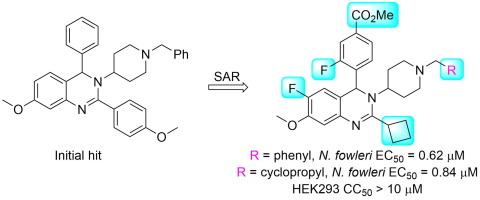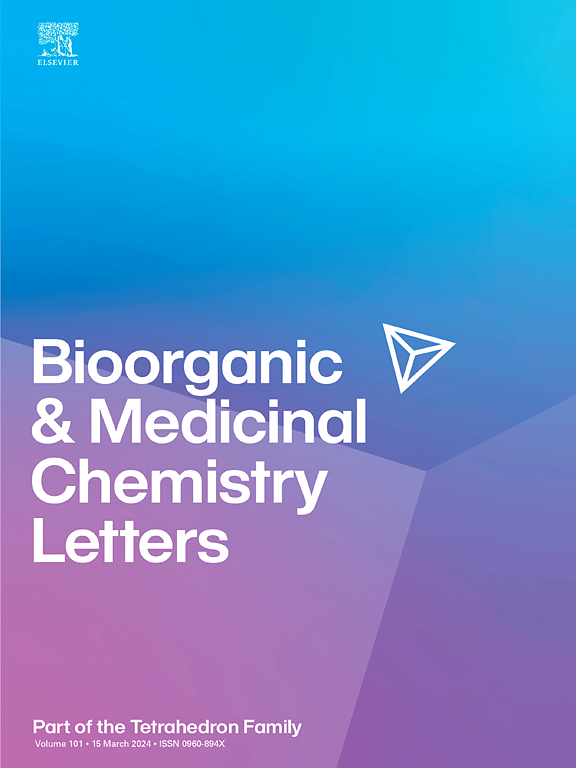Development of dihydroquinazoline compounds as novel therapeutics against Naegleria fowleri
IF 2.2
4区 医学
Q3 CHEMISTRY, MEDICINAL
引用次数: 0
Abstract
Primary amoebic meningoencephalitis (PAM) is a brain infection caused by the free-living amoebae Naegleria fowleri. There are few viable treatment options for the infection, resulting in a >97 % fatality rate. Small molecules are being increasingly investigated as treatment options for this deadly infection. This work details the discovery of a dihydroquinazoline that was toxic to the amoeba and subsequent structure–activity relationship (SAR) development of compounds with increasingly potent activity, yielding several early lead candidates exhibiting submicromolar activity (EC50 = 0.62–0.84 μM) and limited cytotoxicity (CC50 > 10 μM).

二氢喹唑啉类化合物治疗福氏奈格里菌的研究进展
原发性阿米巴脑膜脑炎(PAM)是一种由自由生活的阿米巴原虫引起的脑部感染。这种感染几乎没有可行的治疗方案,导致97%的死亡率。作为这种致命感染的治疗选择,人们正在越来越多地研究小分子。这项工作详细介绍了对变形虫有毒的二氢喹唑啉的发现,以及随后的结构-活性关系(SAR)发展的活性越来越强的化合物,产生了几个早期的先导候选物,表现出亚微摩尔活性(EC50 = 0.62-0.84 μM)和有限的细胞毒性(CC50 >;10μM)。
本文章由计算机程序翻译,如有差异,请以英文原文为准。
求助全文
约1分钟内获得全文
求助全文
来源期刊
CiteScore
5.70
自引率
3.70%
发文量
463
审稿时长
27 days
期刊介绍:
Bioorganic & Medicinal Chemistry Letters presents preliminary experimental or theoretical research results of outstanding significance and timeliness on all aspects of science at the interface of chemistry and biology and on major advances in drug design and development. The journal publishes articles in the form of communications reporting experimental or theoretical results of special interest, and strives to provide maximum dissemination to a large, international audience.

 求助内容:
求助内容: 应助结果提醒方式:
应助结果提醒方式:


